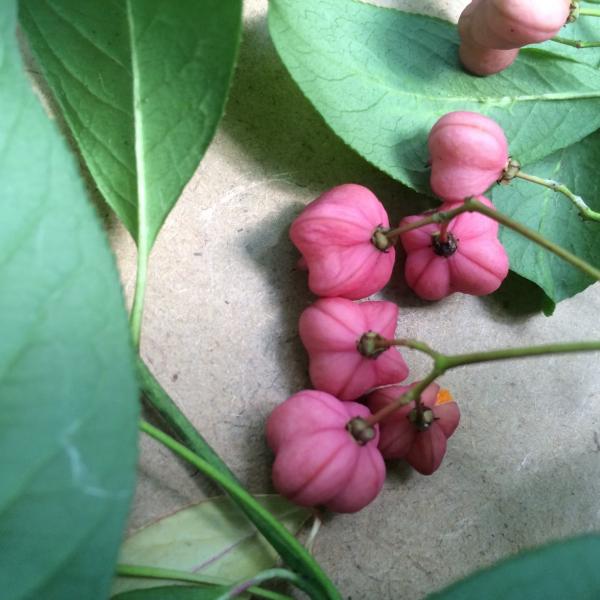
European spindle tree (Euonymus europaeus) is a member of the spindle tree family (Celastraceae), which includes species that are also invasive to North America like burning bush (Euonymus alatus) and Asiatic bittersweet (Celastrus orbiculatus). Species within the spindle tree family are woody shrubs or woody vines, all which have brightly colored flesh (arils) around the seeds ranging from reds to oranges. These fruits appear on the European spindle tree in the late summer and early fall. White seeds coated in orange flesh and pink capsules distinguish this plant from other Euonymus species.
European spindle tree is on the watch list in Vermont, meaning the plant has invasive tendencies, but is not yet prohibited. This plant is also considered an early detection invasive species in Vermont because there are scattered accounts of its spread in the state, but establishment is not thoroughly documented. Spindle tree originates from Asia and Europe, and is thought to have been brought to North America for traditional use, where the hardwood was used to create spindles for wool. In later years, it has become an ornamental landscaping plant. It is commonly found in floodplains, forest edges, early successional habitat, and disturbed areas, is known to grow in zones 4-7, and has been reported in the Provinces of Ontario, Quebec, New Brunswick, and from the states of Maine to Wisconsin, down to Mississippi.
This deciduous shrub can grow in almost full shade, can tolerate a variety of soils (except wet, poorly drained soils), and reach heights over 20’. The leaves are oppositely arranged, simple, and oval in shape, with small serrations along the edge. Mature plants tend towards a rounded branching habit.
The easiest time to spot European spindle tree is after fruiting occurs, in the late summer and early fall. These fruits have been documented to persist well into winter.
To learn more about European spindle tree and how to identify it, check out:
GoBotany, New England Wildflower Society
Center for Invasive Species and Ecosystem Health